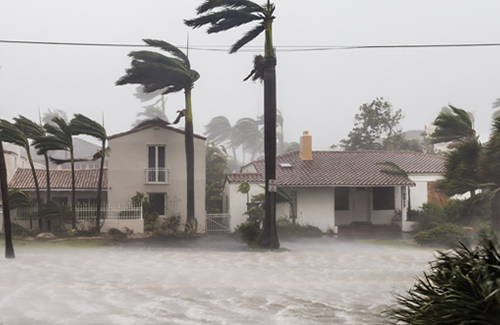Did you know that last year’s Atlantic hurricane season was the most active and the eighth costliest on record? This year’s hurricane season is poised to be just as, if not more, active and destructive. Use these facts when talking to potential clients to warn them about their flood risk and encourage them to secure flood insurance today.
Looking Back on the 2020 Season
- Fact: Last year surpassed 2005 as the most active tropical storm season, with the Atlantic coast seeing 30 named hurricanes throughout the season.
- Fact: Last year was the fifth consecutive year with above-average Atlantic hurricane activity. 2021 is expected to be the sixth consecutive year with above average storms throughout hurricane season.
How Much Did It Cost?
- Fact: The total estimated cost for reported damages as a result of 2020’s hurricane season was about $40.3 billion.
- Fact: A few of the costliest 2020 hurricanes were Hurricane Laura and Hurricane Delta, which caused a combined $20 billion in damage.
- Fact: FEMA issued 29 disaster declarations related to the 2020 Atlantic hurricane season. They distributed a total of almost $375 million in individual and household as of January 2021.
What's Ahead?
- Bonus Fact: According to the National Oceanic and Atmospheric Administration's Climate Prediction Center, the 2021 Atlantic hurricane season could spawn as many as 20 named storms. This would be the United States’ sixth consecutive Atlantic hurricane season that is “above normal,” with an average season generating 12 tropical storms.
What To Say To Potential Clients
- Inform. Use these facts to inform potential clients about their risk during Hurricane Season. Let them know the potential damage a hurricane could cause to their homes and to their financial future.
- Reassure. Let potential clients know that while they can’t control what the weather may bring, they can prepare for it. Remind them that purchasing flood insurance is the best way to ensure coverage in the event of a hurricane or other flood event.
- Prepare. Tell potential clients that the National Flood Insurance Program acts as a partner before, during, and after a flood. Let them know that NFIP will reimburse policyholders up to $1,000 for loss avoidance items like sandbags, lumber, and water pumps.
- Don’t wait. Emphasize that the typical flood insurance policy takes 30 days to go into effect. With hurricane season underway, they won’t want to wait to secure coverage.
Use these lessons learned to inform potential clients about their flood risk before hurricane season. The best way to ensure they are protected is to purchase a flood insurance policy today. Learn more about connecting with potential clients and our free marketing resources.

